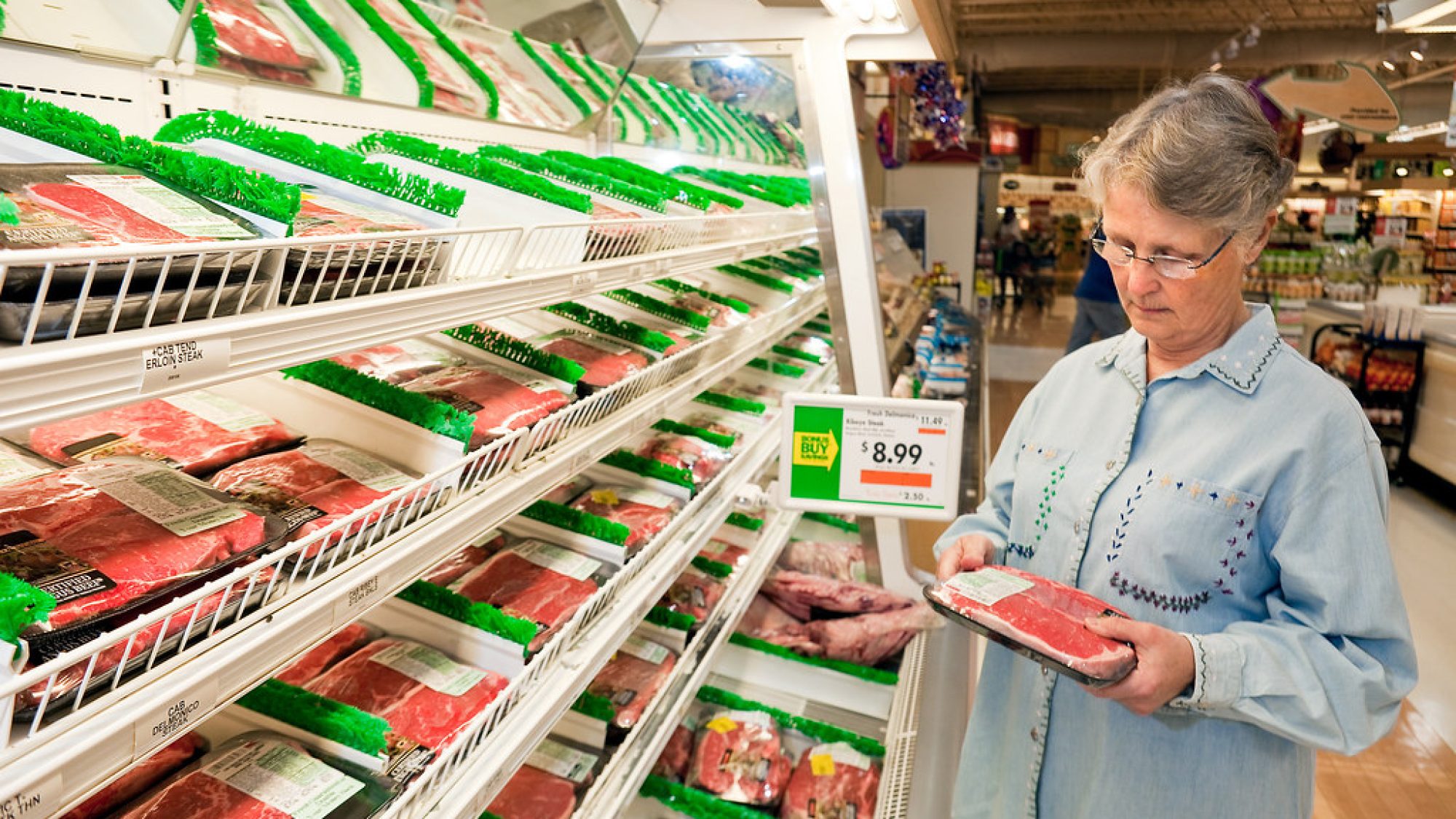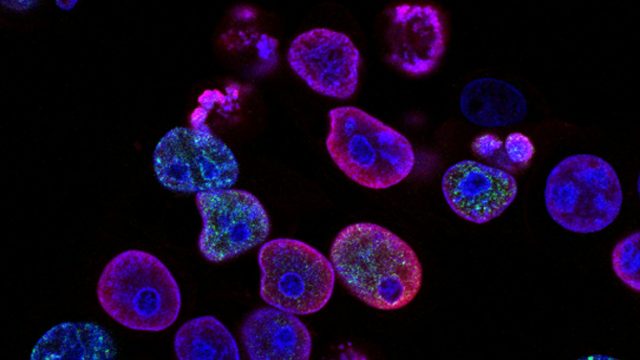
Title: Cell-Based Meat: Regulatory Approaches to a New Food Technology
As a new technology, cell-based meat offers a new source of “food” but for policy or regulatory reasons might not be judged as “meat” or “safe.” Differences between the US and EU about these and other basic legal and scientific issues are emerging and will continue to develop as cell-based meats come closer to being available for public consumption.
Cell-based meats are a recent and innovative food technology where animal cell cultures obtained from livestock, poultry, and seafood are turned into meat. The US Food and Drug Administration (FDA) lists four primary steps to producing cell-based meat, though the brevity of their descriptions is deceiving as the technology and manufacturing processes are incredibly complex. The development of animal flesh growth and production has evolved from traditional breeding to new gene and cell based technologies, stretching our understanding of what food is and how we produce it. Cell-based meat technology may mitigate production, climate, and health and nutrition challenges while decreasing traditional meat production. Nevertheless, it is not yet on the market in the United States or the European Union.
In this evolving global setting, regulators in the US and EU sometimes implement contrasting policy and regulatory approaches. The US has a reputation of welcoming science-based technological developments, while the EU is seen as more focused on tradition rather than innovation. In reality, the US and EU reactions to cell-based meat demonstrate that neither assumption is completely accurate. In fact, the EU Commission has stated that “new technologies and innovations in food production should be encouraged as they could reduce the environmental impact of food production, enhance food security and bring benefits to consumers as long as the high level of consumer protection is ensured.”
The acceptance of food technologies, even after their approval by scientists, has been an issue between the two jurisdictions. This lack of acceptance comes with consequences for international market access.
Defining “Food”
The US and EU use different approaches to define food, but both seem prepared to include cell-based meats under the broad regulatory definitions of “food” in the US and “novel food,” a category used for genetically modified products, in the EU.
Still, there are likely to be questions about which sub-categories of “food” apply. Animal growers and processors will rely on the regulatory definitions of meat to decide when to put the word “meat” on product labels, so the use, or lack of use, of the term “meat” will be central to discussions. “Meat,” if permitted, might be allowed only with a mandatory modifier like “cultured,” “cell-based,” or “clean.” Non-compliant products will be considered misbranded. Alternately, the use of the term “meat” might not be permitted because although the product will begin with cells from an animal, it will be processed and then transformed into a food product. Parties involved with the product will have an interest in its labeling and the information that will be given to consumers. The years of debate about how to label genetically processed foods might be an indicator of discussions to come.
In the United States, the Department of Agriculture (USDA) has the labeling authority regarding cell-based meats, as it has with traditional meats. The FDA has labeling authority regarding cell-based seafood, indicating how the US might allocate the responsibility of labeling of cell-based meats. In a Federal Register Notice about cell-based seafood, the FDA explained its labeling oversight, which includes the name of the food and descriptions about its nature, source, or characteristics, and its applicable regulatory misbranding authority.
In the EU, novel foods are subject to the general labelling requirements in Regulation (EU) No 1169/2011 and other relevant labelling requirements in EU food law. Cell-based meats may be required to provide additional labelled information including a description of the food, its source, its composition, or its conditions of intended use.
The US and EU may determine that cell-based meat created through complex processing may be a food additive and therefore subject to extensive oversight before it may be sold to consumers. Alternatively, in the US, as the food industry is likely to argue, these food products could be “Generally Recognized as Safe” (GRAS). The choice—a risk management decision—has critical consequences for the regulatory path to be followed because a food additive must present safety information and be pre-approved before it may be marketed, while a GRAS designation circumvents this process. This decision might affect whether the US and EU recognize the “equivalence” of each other’s products.
Product Safety and Regulation
Both the US and EU maintain extensive oversight of the safety of foods produced and marketed within their individual jurisdictions. Regulators must look for and regulate potential hazards in the product and production of cell-based meat at each stage of the process. The possibility of contamination during production stages, safety of the tissues, the proprietary culture in which the cells grew, and the scaffold or other vehicle for multiplying the cell strands must be considered.
The EU might normally be considered less accepting of such an innovation in food production, but it has a head start in the development of a regulatory scheme because of its Novel Food regulation. Although it is a generic regulation, the revised version mentions cell-based meats. In addition, if a food product’s safety cannot be assessed and scientific uncertainty persists, the “precautionary principle,” which has been controversial, may be applied. “Precaution” is a risk management choice made when a regulator decides action must be taken to prevent harm and to protect an essential interest (e.g., involving health or the environment), although its impact has not yet been concluded scientifically. The US recognizes the role of precaution but does not want it to be applied in a protectionist manner and objects to calling it a principle.
In the US, the FDA plans to exercise oversight during cell selection and growth cell differentiation, where the product achieves characteristics of muscle, fat, or connective tissue cells. Jurisdiction will be transferred to the USDA during harvesting, where it will regulate processing, labeling, and inspections of establishments, among other responsibilities.
Popular Opinion
The voices and current priorities of consumers and civil society shape consumer culture surrounding new food products. Consumer reactions to cultured meats are still being surveyed. Concerns expressed are broad and relate to food security, environmental sustainability, and animal welfare. New cell-based technology, sometimes said to produce “clean meat,” might respond to criticisms of the environmental impact of beef production. Despite this framing, cell-based meat will need to compete alongside nutritionally, socially, and environmentally friendly foods like non-meat burgers. Product name, price, taste, and texture are additional important factors and will influence consumer acceptance of cell-based meats. These concerns highlight the role of consumer preferences and perceptions. Input from consumers will continue to shape how both jurisdictions approach labeling and regulating cell-based meat technology.
Conclusion
As with many other new food technologies, cell-based meats raise policy and regulatory issues. Regulatory differences between the US and EU could develop like past policy differences on the issues of growth hormones, genetic engineering, and geographical indications. Labeling and safety decisions will be fundamental for regulators, consumers, and food businesses.
…
Marsha Echols is a Professor at Howard University School of Law and is the Founding Director of The World Food Law Institute.
Image Credit: “d2590-1” by USDAgov is licensed under CC BY 2.0
More News

Export controls on AI components have become central tools in great-power technology competition, though their full potential has yet to be realized. To maintain a competitive position in…

The Trump administration should prioritize biotechnology as a strategic asset for the United States using the military strategy framework of “ends, ways, and means” because biotechnology supports critical national objectives…

Fiji, a Pacific Small Island Developing State (PSIDS), faces rural electrification challenges due to its dispersed geography and climate vulnerabilities. With 6 percent of Fijian rural households lacking…